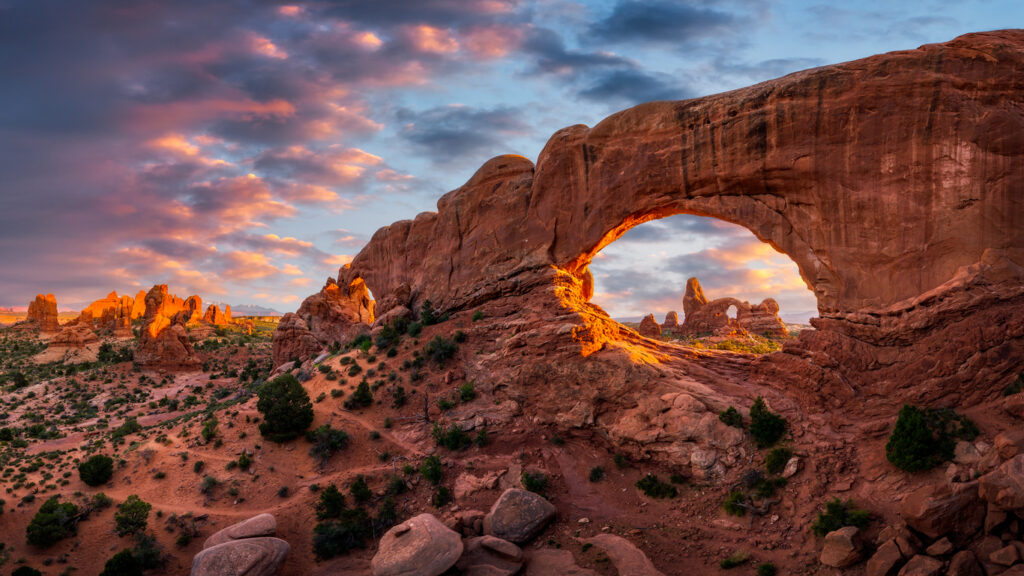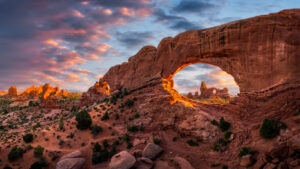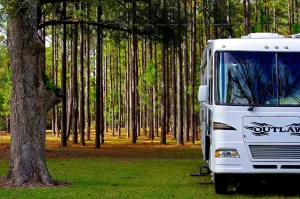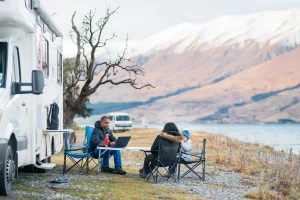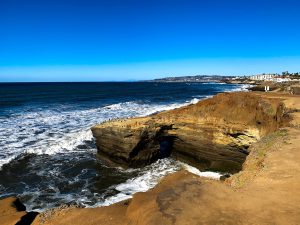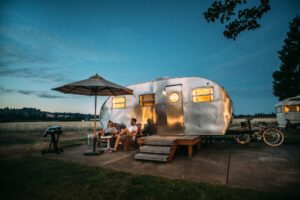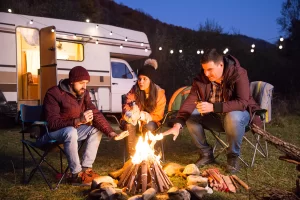As RV travel continues to grow in popularity, many travelers are heading to national parks for unique and scenic camping experiences. However, with this increase in RV traffic comes stricter rules and regulations from park authorities. It’s essential for RV owners to understand these regulations and plan accordingly in order to have a smooth
Traveling the open road in the comfort of your RV is a quintessentially American experience synonymous with freedom, adventure, and the great outdoors. And what better way to savor the natural splendor of the U.S. than by meandering through its vast system of national parks?

Whether you’re drawn to the towering redwoods of California, the dramatic vistas of the Grand Canyon, or the abundant wildlife of Yellowstone, a trip to these havens of nature promises an escape from the daily grind and an immersion in some of the most majestic landscapes on Earth.
In this guide, we’ll help you map your RV adventure to national parks with precision, ensuring that you adhere to park regulations and make the most of your journey. From selecting the ideal RV for your needs to understanding the intricate web of rules that protect these sacred spaces, we’ll cover everything you need to know to plan a seamless and unforgettable national park excursion.
Choosing the Right RV
Opting for an RV for your national park odyssey grants you the freedom to set your own pace and the convenience of bringing your home with you. However, not all RVs are created equal, and the type you choose can significantly impact your trip.
A large Class A motorhome may be ideal if you’re planning to explore parks with well-maintained roads and spacious campsites. These RVs offer plush amenities and ample living space but can be challenging to maneuver in smaller, more remote parks.
On the other hand, if you plan on navigating narrow mountain passes or boondocking in secluded locations, a compact Class B motorhome or a truck camper may be more suitable. Ultimately, the key is to match your RV choice with your preferred style of travel and the terrain you’ll encounter.
Understanding Park Regulations
As with any visit to a protected natural area, it’s crucial to familiarize yourself with park regulations before embarking on your journey. National parks have specific rules in place to preserve the integrity of the land and protect wildlife, so it’s essential to adhere to them to minimize your impact on the environment.
Some standard regulations in national parks include designated camping areas, designated hiking trails, limits on group sizes, and specific requirements for storing food and disposing of waste. It’s also crucial to note that many parks have restrictions on pets, so if you’re traveling with furry companions, make sure to check the park’s regulations beforehand.
Planning Your Route
One of the most exhilarating aspects of RV travel is the freedom to explore at your leisure. However, when it comes to national parks, planning your route carefully is essential. Many popular parks have limited camping options and require reservations months in advance, so be sure to plan accordingly.
Additionally, some parks have seasonal road closures, so make sure to check the park’s website or call ahead for updates. It’s also a good idea to research nearby RV parks and campgrounds in case you encounter any unexpected closures or full campgrounds within the park.
Tips for Navigating Park Roads
Once you’ve reached your desired national park, it’s time to hit the road and soak in the beauty around you. However, navigating park roads can be challenging due to their narrowness, steep grades, and sharp turns. Here are a few tips to help you navigate safely and efficiently:
- Drive slowly: Many national parks have speed limits of 25 mph or less, so take your time and enjoy the scenery.
- Watch out for wildlife: Keep an eye out for animals crossing the road, and be prepared to slow down or stop if necessary.
- Use pullouts: If you want to take in a view or snap some photos, make sure to use designated pullout areas. Do not park on the side of the road, as it can block traffic and damage vegetation.
- Pay attention to warning signs: National parks have various warning signs, from low clearance tunnels to sharp curves. Make sure to follow these signs and drive accordingly.
Factors to Consider for a National Park Adventure
When deciding on the perfect recreational vehicle for your excursion, several key factors should be weighed:
- Size and maneuverability: As mentioned earlier, the size and maneuverability of your RV are crucial to consider when planning a trip to national parks. Make sure to research road conditions and campground sizes beforehand.
- Amenities: Depending on the length of your trip, you may want various amenities in your RV, such as a kitchen or bathroom. Think about what is essential for your comfort and plan accordingly.
- Fuel efficiency: If you’re planning to cover a lot of miles, choosing an RV with good fuel efficiency can save you money in the long run. Consider opting for a smaller, more streamlined model if this is a priority for you.
- Maintenance and repairs: RVs require regular maintenance and occasional repairs, so ensure that your chosen vehicle is up to date on all necessary maintenance and has a reliable service history.
As you plan your next RV adventure to a national park, remember these tips to ensure a smooth and enjoyable journey while respecting the regulations that protect these stunning natural areas. With the right RV and careful planning, you’ll be well on your way to creating unforgettable memories amidst some of America’s most breathtaking landscapes.
Strategic Planning

The success of any national park adventure hinges on strategic planning. Advance reservations for campsites, especially during peak seasons, are crucial to securing your spot in these popular destinations. Here’s how to make sure you’re prepared:
Researching Park Regulations and Restrictions
Each park has its own set of regulations that can impact your visit, such as generator use, maximum RV lengths, and pet policies. Familiarize yourself with these rules well in advance to avoid any surprises that could derail your plans once you’re on the road.
Reserving Campsites in Advance
National parks offer a range of camping options, from full hookup sites to primitive backcountry spots. For RV travelers, booking a campsite equipped for your vehicle’s needs is essential. Often, these slots fill up quickly, especially during peak seasons, so don’t delay in securing your reservation.
Packing Essentials
Packing for an RV adventure means finding the balance between traveling light and ensuring you have everything you need for a comfortable and enjoyable trip.
Gear for Outdoor Activities
Whether you’re a hiker, angler, or wildlife enthusiast, you’ll want to ensure you have the right gear to make the most of your outdoor activities. Don’t forget essentials such as hiking boots, binoculars, and a detailed trail map.
RV Maintenance Tools
While on the road, unforeseen maintenance issues can arise. Be prepared with a toolkit and spare parts appropriate for your RV type. It’s also wise to familiarize yourself with basic troubleshooting and repairs to avoid being stranded in the wilderness.
Food and Water Supplies
Many national parks have limited or no food options within the park, so be sure to stock up on groceries, snacks, and plenty of water before entering. Plan for meals that can be easily cooked in your RV’s kitchen or over a campfire.
First Aid Kit
Accidents happen, and when you’re far from civilization, it’s essential to have a fully stocked first aid kit on hand. Include items such as bandages, pain relievers, antiseptics, and any necessary prescription medications.
With these tips in mind, you’ll be well-prepared for an unforgettable RV adventure through America’s national parks.
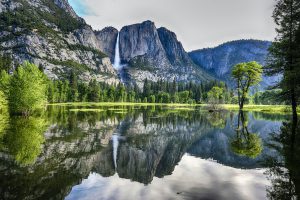
Navigating Park Regulations
In the spirit of preserving these natural wonders for future generations, national parks are governed by strict regulations designed to minimize the impact of human activity on their delicate ecosystems.
Understanding Park-Specific Rules and Guidelines
Before you head off, take the time to research the specific rules of the parks on your itinerary. Some may require permits for day-use or backcountry camping, while others may restrict the use of certain types of equipment or the times when certain roads or trails are accessible. Knowing these details will help you plan your trip and ensure you’re in compliance with all regulations.
Leave No Trace Principles
One of the most critical rules to follow when visiting a national park is to adhere to the Leave No Trace principles. These guidelines aim to minimize human impact on the environment by promoting practices such as packing out all trash, respecting wildlife and vegetation, and avoiding damaging natural features. By following these principles, you can help preserve the parks for generations to come.
Environmental Conservation Practices
Be a responsible traveler by following Leave No Trace principles and adhering to park guidelines. Respect wildlife by observing from a distance, dispose of waste properly, and choose sustainable camping practices. Remember, the enjoyment of these natural sites should not come at the cost of their well-being.
Making the Most of Your Experience
National parks are rich with opportunities for discovery and adventure. Ensure you make the most of your visit by planning activities that align with your interests and the park’s offerings.
Activities to Enjoy in National Parks
From guided ranger programs to scenic drives and stargazing, national parks boast a broad range of activities for all ages and preferences. Research ahead of time to schedule any special tours or programs, and be prepared to alter plans based on weather or wildlife activity.
Safety Precautions for RV Travel
Safety should always be a top priority. Be mindful of wildlife, observe speed limits, and notify others of your planned routes and expected return times. Travel with a first-aid kit and be prepared for emergencies by having a communication plan.
Respect and Appreciation for Nature
Above all, remember to respect and appreciate the natural beauty of these protected areas. Take only memories and leave footprints as you explore, capturing the stunning landscapes through photographs rather than disrupting or damaging them. By practicing responsible travel habits, you can help ensure that future generations will have the opportunity to experience these incredible national parks.
Enjoying the Journey
With proper planning and an appreciation for the natural world, an RV trip to explore the national parks of the United States offers an experience unlike any other. Immerse yourself in the beauty of our country’s most treasured landscapes, and take pride in being a steward of these remarkable environments.
If you’ve been perched on the edge of adventure but haven’t quite taken the leap, there’s no time like the present to start planning your escape to the great outdoors. Exploring national parks with an RV is not just a vacation; it’s a soul-refreshing odyssey that celebrates Earth’s natural features’ sheer diversity and majesty.
The road ahead will be lined with breathtaking views, whispering trees, and perhaps a few unexpected turns. But with the guidance in this post and an intrepid spirit, you’re ready to seize the steering wheel and embark on a memorable and meaningful venture.
